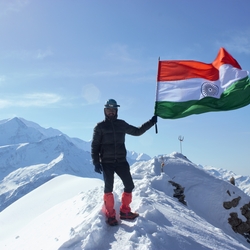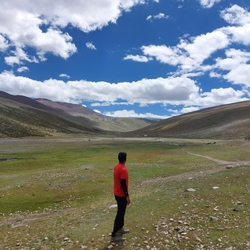Sleeping bags could be the difference between having an enjoyable expedition or a sleepless one! While this piece of gear does not directly aid your climb, it is a crucial part of mountaineering equipment, without which it would be close to impossible to perform a multi-day expedition. It is therefore important that you choose your sleeping bag carefully, ensuring that it meets all your requirements.
This article provides all the information you need to know about sleeping bags and mattresses. We have included a small guide on how best to care for your sleeping bags and safe storage to avoid any damage.
Different Types of Sleeping Bags
There are four different types of sleeping bags based on their shape, two types based on their insulation and three types based on the temperature range they offer.
Based on Shape:
Rectangular: These provide optimum space to stretch out your arms and legs and sleep comfortably. Some of them can even be fully unzipped to be used as a comforter.
Mummy: This type has a snug fit, offering more warmth. They also weigh less than the other types. It would not be possible to roll over in these sleeping bags but you could roll with it.
Semi-Rectangular: These are designed to offer both warmth and space to stretch out (although not as much as a rectangular bag). They are also known as ‘barrel’ or ‘modified mummy’ as they are a combination of different shapes.

Double Bag: These are ideal for two people who want to fit into a bag. A double bag can also be made with two rectangular bags which are designed to be zipped together.

Based on Insulation:
Synthetic: These sleeping bags are made with synthetic or artificial fibers and are affordable. They are also quick to dry and provide insulation even when they are damp.
Down: Down refers to the light layer of feather that is present immediately next to a goose or duck’s skin. Sleeping bags made from these are highly durable and last for years. They come with water resistant treatment and perform well in dry and cold weather. This variety is also lightweight and compresses well for easy packing.
Based on Temperature:
Summer Camping Bags: These bags will keep you warm in temperatures above 1℃.
Winter Camping: These bags keep you warm in a temperature range of -9℃ or below.
Spring Camping: These bags will keep you warm in temperatures between -9℃ and 1℃.
Sleeping Mattresses
Sleeping mats keep you from losing warmth to the ground and make your camp extra comfortable. These are particularly useful when camping in snow when placing your sleeping bag directly on the tent floor could mean freezing yourself all night. Typically, foam mats are used on most expeditions to add an extra layer of insulation to the sleeping bag.
How to Use and Get Into your Sleeping Bag
While it is no rocket science, a few tips on usage will help you snuggle into your sleeping bag with more ease. The following are a few steps you can follow:
- Place the sleeping bag on a mattress and unzip it halfway.
- Put the sleeping bag liner in place and wear a clean pair of socks before getting in.
- Slip into the bag and pull the bag up such that your feet touch the bottom.
- Lie down and zip up the bag with the hood of the bag covering your head.
- Zip it up depending on how snug you want the fit to be.
- Once you are up in the morning, unzip the bag, sit up and unzip it further until you can comfortably get out.
- Roll the sleeping bag bottom up to the length of its cover.
- Remove excess air as you roll it.
- Push it into the cover and tighten the strings to close the cover.
Maintenance and Storage
Here are a few tips that will help you take good care of your sleeping bag while out on the expedition and even once you are back at the base:
- Always use a liner and sleep in clean clothes.
- Use a sleeping mattress to protect the bag from the ground.
- Be gentle with its use and ensure that you air out daily if possible.
- Once you are back home, unzip the bag and air dry until it is fully dry.
- If it requires cleaning, resort to spot cleaning instead of a full blown wash. Make a paste with a mild detergent and clean the spots with hand or a soft brush. Rinse the spot with clean water. While doing this, hold the liner away from the insulation to ensure it does not get wet.
- If the sleeping bag is full of dirt and requires a complete wash, wash it in lukewarm water with mild soap. Let it soak before washing and then rinse it thoroughly in clean water.
- Air dry it until it is completely dry.
- Stuff the sleeping bag in a cotton cover or mesh bag that was given with the sleeping bag at time of purchase. These can also be bought separately.
- Store the bag in a cool and dry place away from direct sunlight.
That’s all the information you need to know about sleeping bags and mats. Should you wish to know more or have any further queries, feel free to reach out to our team!






